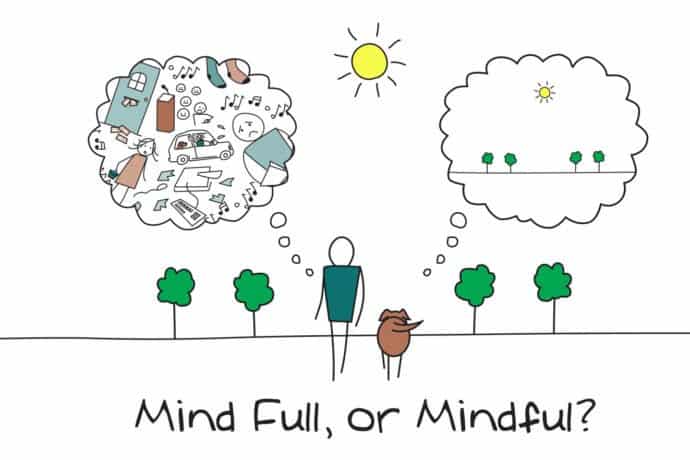In the original Sanskrit Buddhist texts, the concept of compassion is described by the words maitri and anukampa. Maitri indicates a sense of fellowship with others; anukampa describes a deep empathy that arises in the encounter with suffering and which gives rise to action. Buddhist compassion could be described as the desire to relieve suffering and to give joy.
Compassion is often thought of as akin to pity, but whereas pity may be condescending, compassion springs from a sense of the equality and interconnectedness of life. Compassion is rooted in respect for the inherent dignity of life–our own and others’–and a desire to see that dignity triumph.
True Buddhist compassion has nothing to do with sentimentality or mere pity. This is because sentimentality or mere pity cannot help the other person achieve victory in life; it cannot truly relieve suffering and impart joy. Compassion, a sense of solidarity with others–with all life–arising from a wish for mutual happiness and growth, is the heart and origin of Buddhism. The essence of compassion is empowerment. The effort to offer others effective encouragement for their specific circumstances is what gives rise to wisdom. Compassion and wisdom are thus closely related.
Compassion has both an emotional and rational component. Emotionally, we need to appreciate the interdependence of all life on this planet. The rational basis for extending our compassion equally to everyone is so obvious, yet it’s something that many people don’t even consider: everyone is equal in wanting to be happy, and everyone is also equal in wanting to be free of unhappiness and suffering. These two facts remain true regardless of whether someone is close or distant from us, and regardless of what they might do.
All of us are born with the potential to be compassionate, where we wish for others to be free of suffering and its causes. We can develop that capacity to bring incredible benefit to ourselves and others. In order to give rise and cultivate compassion, we can use meditation as a skillful mean. The training for developing compassion generates it in stages of intensity. We can focus first on the sufferings of those we like, then those who are neutral, and then those we dislike. Ultimately we can focus on the suffering of everyone, everywhere, equally.
Buddhist compassion is similar to lay conceptions of compassion in name only. While lay concepts of compassion are of warm feelings for particular people in need, Buddhist compassion is not particular, warm, or even a feeling. Compassion in the Buddhist sense is not based on what we call “feeling”. While Buddhist’s do not deny the natural feelings that may arise from seeing another in need, this is not the compassion Buddhism values. Instead, Buddhist compassion is the result of knowing one is part of a greater whole and is interdependent and connected to that whole. It is the result of practiced meditations. Buddhist compassion should be without heat or passion – it is objective, cold, constant and universal. The true compassion has the potential to appear cruel or ruthless. Compassion requires prajna or transcendental wisdom – an ability to see past shallow appearances and see true suffering and need. For this reason, compassion may involve giving someone what they really need, not what they want. In addition, compassion is an open gift, it is generosity without demand. One does not expect or require reciprocity or confirmation of compassion. For this reason, the true compassion will often not be appreciated and may be received with anger or hatred. Anger is the main obstacle that causes deterioration to compassion and the awakening mind.
Compassion is not an emotion or feeling, so the two are not opposites in Buddhist conceptions as they are in Western and lay conceptions. Although often expressed as loving kindness, it is important to note that Buddhism makes a strict distinction of compassion from what it calls grasping love and attachment. Love, when seen as desire, necessarily leads to suffering. In this way, love is seen as a need to attach oneself to others in order to achieve a sense of security and belonging. Instead, Buddhism encourages love and compassion in the sense of openness and fearlessness. True compassion and love have no territorial bounds – they are freely offered and received.
Compassion plays such an important role in the Buddhist approach to spirituality that we can say that a genuine practice of the Dharma is actually based on the development of these qualities. The teachings always emphasize that, unless we practice and integrate these qualities into our everyday lives, it will be utterly impossible to attain enlightenment and liberation. Moreover, without such an integration of loving-kindness and compassion, not only are we failing to benefit others, we are actually harming them, whether directly or indirectly. In the same way that water can never be used to make things dry, and fire cannot be used to make them wet, aggression and harmfulness can never cause enlightenment.
Compassion is given an especially prominent place in the Mahāyāna branch of the Buddhist tradition by virtue of its association with the central ideal of the Bodhisattva, although concern for living things is conceptually no less central in the Theravādin branch. The Bodhisattva is known, and even defined, by his or her commitment to the salvation of other beings.
In Mahāyāna Buddhism, compassion is one of the two qualities, along with enlightened wisdom (Sanskrit: prajña), to be cultivated on the bodhisattva path. The elevation of compassion to the status of prajña is one of the distinguishing factors between the Theravāda arahant ideal and the Mahāyāna bodhisattva ideal. Throughout the Mahāyāna world, Avalokiteśvara (Sanskrit; Chinese: Guan Yin; Japanese: Kannon; Tibetan: Chenrezig) is a bodhisattva who embodies compassion.
photo credit: romanticmission




